In today’s fast-paced world, it’s all too easy to overlook the small but crucial aspects of our daily lives. From the air we breathe to the comfort of our homes, every element plays a significant role in our overall well-being.
Hello, I’m Mannan Wasif, and I understand the value of a healthy, moisture-free environment in our living spaces. I’ve dedicated myself to unraveling the tricks and troubleshooting the problems that often crop up with dehumidifiers, those silent heroes that safeguard our homes from excess humidity.
Join me as I delve into the intriguing world of dehumidifiers, and in this blog post, we’ll demystify the enigmatic phenomenon of what causes a dehumidifier to freeze up, disrupting the tranquility of our indoor sanctuaries.
But before we embark on this journey, let’s take a moment to recognize that our health and the quality of the air we breathe are intricately linked. The dehumidifier, an unassuming presence in many homes, plays a pivotal role in ensuring that link remains strong. Imagine a friend who always looks out for your well-being, silently regulating the atmosphere to keep you comfortable and healthy.
In this post, I’ll introduce you to the nuances of dehumidifiers and the common hurdles they may face, such as freezing up, and guide you through understanding and overcoming these challenges with ease.
What Causes a Dehumidifier to Freeze Up?
Dehumidifiers can freeze up due to a range of factors. Here’s a breakdown of these issues:
1. Blower Wheel Or Fan Blade
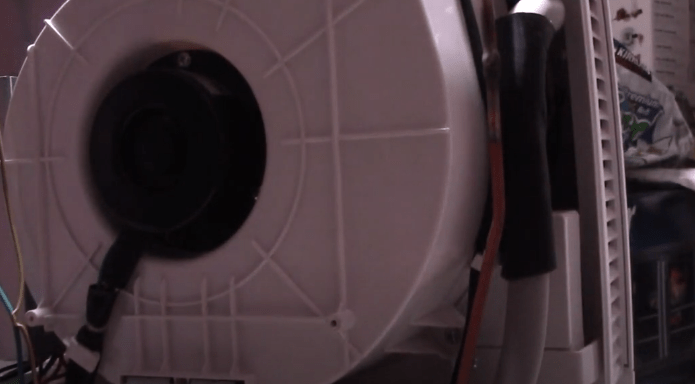
If your dehumidifier freezes up while the room temperature remains above 65 degrees Fahrenheit, it may be due to a malfunctioning blower wheel or fan blade.
Remove the fan cover, clean the blades and components, and check for any debris hindering their movement. Replace the damaged blades.
2. Humidity Controls
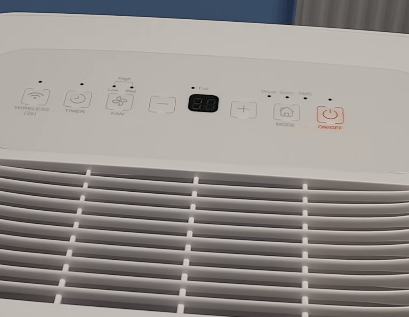
When the room temperature exceeds 65 degrees Fahrenheit but your dehumidifier still freezes, it might be related to humidity control or the humidistat.
After inspecting other components, focus on the humidity control. Test it using a multimeter or by adjusting the dial with the power off. If it doesn’t show open circuits, it needs a replacement.
3. Fan Motor
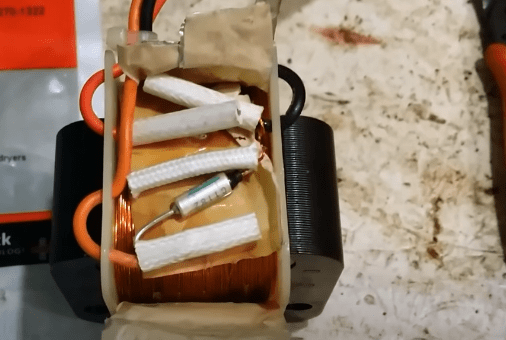
To ensure the fan is functioning properly, check for adequate airflow through the grill. If it’s lacking, it could be due to a faulty fan motor.
Clean the fan motor, reinstall it, and test the dehumidifier with only the fan running. Replace the motor if airflow remains insufficient.
4. A Warning
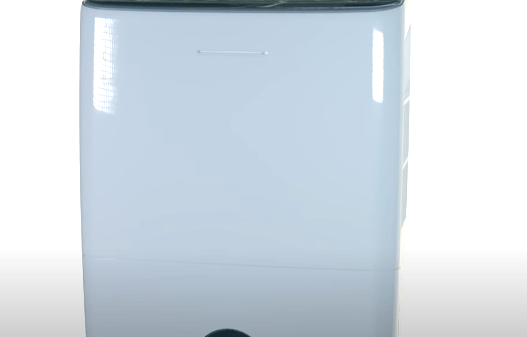
Sometimes, freezing occurs because of exceptionally high indoor humidity levels.
Address high humidity promptly to prevent health issues caused by moist air.
5. Other mechanical or electrical failures

If your dehumidifier is mechanically compromised or has electrical issues, it might struggle, leading to freezing problems.
In case your unit ceases to function for any reason, seek professional repair services.
6. Faulty humidity sensor
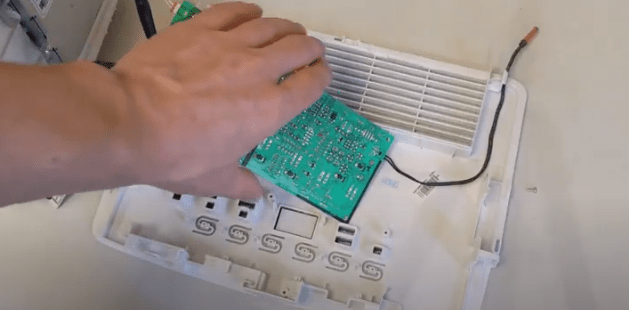
A clogged or damaged humidity sensor can prevent accurate moisture measurement.
Inspect and clean the humidity sensor to ensure it functions correctly.
7. Faulty bi-metal thermostat
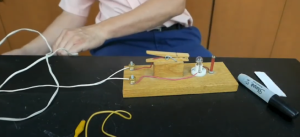
A damaged bi-metal thermostat can contribute to ice buildup in your dehumidifier.
Check the thermostat settings and try adjusting them to see if it resolves the issue.
8. Faulty fan motor or blower wheel
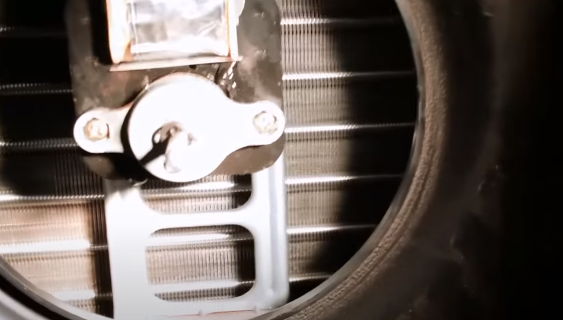
If your dehumidifier ices up when set to a warmer temperature, a faulty fan motor or blower wheel might be the culprit.
Temporarily turn off the unit and then restart it. This often resolves issues related to the fan motor or blower wheel.
9. Dirty evaporator/ condenser coils

Check if dirt or debris has accumulated on the condenser coils, which can reduce heat exchange efficiency.
Disconnect the coils and clean them using a vacuum or leaf blower.
What can you do to stop it?
To prevent your dehumidifier from freezing, follow these steps:
1. Check the Temperature
Dehumidifiers often have temperature settings that allow you to control the air temperature they operate in.
When it’s too warm in the room, the dehumidifier might struggle to remove moisture because the air temperature is higher, increasing the risk of freezing.
Adjusting the temperature dial to a colder setting can help prevent freezing in these conditions.
By setting the temperature within the optimal operating range, you ensure that your dehumidifier functions efficiently without encountering freezing issues.
2. Check Air Flow
Adequate airflow is crucial for the proper functioning of a dehumidifier.
Check the vents and grills of your dehumidifier to make sure they are not obstructed by objects or debris. If these are blocked, the dehumidifier can have a harder time removing moisture from the air.
Obstructions in the airflow can also lead to uneven cooling and contribute to freezing issues.
Ensure that the unit’s air intake and exhaust areas are clear to maintain optimal airflow. Regularly cleaning these components can help prevent freezing.
3. Check for debris and build-up
Over time, dust and debris can accumulate on the evaporator coils and fins of your dehumidifier.
When these components become dirty or clogged, the dehumidifier’s ability to exchange heat with the surrounding air diminishes, making it more susceptible to freezing.
Cleaning the evaporator coils and fins is essential to ensure efficient operation. You can use a vacuum cleaner or a leaf blower to remove accumulated dirt and debris.
Regularly inspect and clean these components to prevent freezing problems and maintain the dehumidifier’s performance.
4. Clean it
Dehumidifiers, like any other appliance, benefit from regular maintenance and cleaning.
In addition to cleaning the evaporator coils and fins, it’s important to keep the entire unit clean and free from dust and debris.
Cleaning the exterior surfaces, air filters, and the water collection reservoir (if applicable) helps maintain the dehumidifier’s overall efficiency.
Follow the manufacturer’s instructions for cleaning and maintenance to keep your dehumidifier in optimal condition and prevent freezing.
5. Switch It Off
If you live in an area where temperature fluctuations are common, you can consider setting your dehumidifier on a timer.
Timed operation allows you to schedule when the dehumidifier runs, ensuring that it operates during periods when the risk of freezing is lower.
For example, you can set the dehumidifier to run during the day when temperatures are typically warmer and turn it off at night when temperatures drop.
This strategy helps prevent the coils from freezing and reduces the strain on the unit.
Troubleshooting Tips
Here are the troubleshooting tips that cause a dehumidifier to freeze up:
- Check for Loose Components: Start by explaining how to turn off the dehumidifier and unplug it for safety. Then, guide readers through inspecting the unit’s components, such as the blower wheel, fan blades, and other moving parts. Explain that loose or damaged components can impede proper operation and lead to freezing. Offer instructions on how to tighten or replace any loose or damaged parts.
- Inspect Electrical Connections: Describe how to check the power cord, plug, and electrical connections. Explain that loose or damaged electrical connections can cause the dehumidifier to malfunction, including freezing. Provide guidance on how to safely assess and address any electrical issues, which may involve tightening connections or replacing damaged cords.
- Assess Airflow: Discuss the importance of adequate airflow for a dehumidifier’s operation. Guide readers on how to check for obstructions in the air intake and exhaust vents. Explain that blocked vents can hinder proper air circulation, potentially leading to freezing. Offer instructions on safely clearing any debris or obstructions to ensure optimal airflow.
- Test the Humidistat: Explain how to test the unit’s humidistat or humidity control settings. Describe the process of using a multimeter or adjusting the humidistat’s dial with the power off to check for proper functionality. Emphasize that a faulty humidistat can lead to freezing issues. If the humidistat doesn’t respond correctly, provide guidance on replacement.
- Monitor for Unusual Noises: Advise readers to pay attention to any unusual noises coming from the dehumidifier, such as grinding or clunking sounds. Explain that unusual noises can indicate mechanical problems. Offer troubleshooting steps to identify the source of the noise and potential solutions, which may involve cleaning or lubricating moving parts.
- Inspect for Visible Damage: Encourage readers to visually inspect the dehumidifier for any visible damage or signs of wear and tear. Explain that damaged components can impact performance and lead to freezing. Provide guidance on how to identify and replace damaged parts, such as fan blades, blower wheels, or coils.
- Evaluate the Temperature Settings: Remind readers to verify that the temperature settings on the dehumidifier align with their indoor environment. Explain that incorrect settings can affect the unit’s ability to maintain optimal humidity levels. Offer instructions on how to adjust the settings to prevent freezing.
- Safely Restart the Dehumidifier: If readers have made adjustments or fixes based on the troubleshooting steps, guide them on safely restarting the dehumidifier. Emphasize the importance of following safety precautions and manufacturer guidelines. Mention that monitoring the unit’s performance after troubleshooting is crucial to ensure the freezing issue is resolved.
Should You Use A Dehumidifier That Freezes?
Running your dehumidifier after it freezes can be acceptable, provided you address the issue promptly. When your dehumidifier freezes, it signals a problem that should not be ignored. Repeated freezing can result in permanent damage to the coils, compromising the unit’s effectiveness.
If the dehumidifier continues to operate while its coils are frozen due to underlying issues, it tends to overcompensate, leading to additional wear and tear. This can ultimately lead to burnout, potentially posing safety hazards. Persistent freezing occurrences are a clear indication of internal mechanism problems.
In such instances, it is advisable to seek the expertise of a technician for troubleshooting and repairs. If troubleshooting proves unsuccessful, consider replacing the dehumidifier with a new one to ensure the continued comfort and safety of your indoor environment. Swift action is crucial to guarantee that your unit functions optimally.
Conclusion
In summary, a dehumidifier can freeze due to various factors, such as malfunctioning components, high humidity levels, or mechanical/electrical failures. To prevent freezing, maintain proper temperature settings, ensure good airflow, clean the unit regularly, and consider timed operation in fluctuating temperatures.
If freezing occurs, swift action is crucial to avoid permanent damage. Continuously using a freezing dehumidifier can lead to wear and tear, potentially causing burnout. Consulting a technician for repairs or investing in a new unit may be necessary for long-term effectiveness and safety.

He is a mechanical engineer & our expert team member with over four years of experience who provides comprehensive and informative guides on various home improvement topics. From DIY projects to professional installations, he strives to give readers the knowledge and tools they need to make informed decisions and successfully complete their home improvement projects.
His goal is to empower homeowners to create the home of their dreams, while also increasing the value and functionality of their property. Whether you’re a first-time homeowner or a seasoned renovator, he has something for everyone.
